


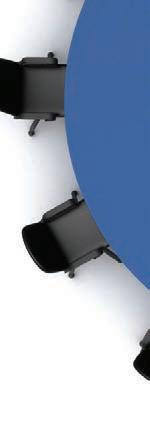































































































































































As we tick off the days on the calendar during this final month of 2013, it presents us a good opportunity to look back over the year and see how far we’ve come. But it’s an even better chance to look at the signposts up ahead to see where the road may lead us.
Charles Thompson, Publisher
E-mail: cthompson@ americantrademagazines.com Phone: 312-361-1680
Bruce Beggs, Editorial Director
E-mail: bbeggs@ americantrademagazines.com Phone: 312-361-1683
Roger Napiwocki, Production Manager
Jean Teller, Contributing Editor
Carlo Calma, Editorial Assistant
Nathan Frerichs, Digital Media Director
E-mail: nfrerichs@ americantrademagazines.com Phone: 312-361-1681
Donald Feinstein, Natl. Sales Director E-mail: dfeinstein@ americantrademagazines.com Phone: 312-361-1682


office information
BeggsI invited several manufacturers and distributors, as well as a key industry association executive, to compare the post-recession industry to where it was five years ago, to identify some opportunities for improvement by store (implementing some of their ideas wouldn’t cost you a penny), and to define the roles of manufacturer, distributor and store owner in pushing our industry forward.
How deep do your responsibilities lie? Do you owe anything to anyone except yourself and your business? You might be surprised to read what the experts have to say. My Year-End Roundtable article opens on page 8.
A tornado ravages Oklahoma. A hurricane floods the East Coast. Bombs shut down the city of Boston. At times of disaster, a business owner had better have a recovery plan in hand to mitigate harm when bad things happen. Phil Perry consults some disaster planning experts on how best to prepare for the “what-ifs.” Read his story beginning on page 22.
If you’re wanting to invest in the coin laundry industry, or if you’ve got a new store in the works, then Speed Queen’s Dan Bowe has some advice for you. Prior to opening a store, there are several factors that a new investor should consider to equip himself or herself for long-term success.
Bowe spells out the important relationships one must build, the influences behind equipment choices, and more. Be prepared to invest time and resources if you want to be successful, he says. Want to learn more? Turn to page 24.
Whether you’re a newcomer or a 30-year veteran, we at American Coin-Op hope that 2013 was a good year for you and that 2014 brings even better things.
Cheers,
Bruce Beggs Editorial DirectorMain: 312-361-1700 Fax: 312-361-1685 subscriptions 630-739-0900 x100 www.AmericanCoinOp.com
American Coin-Op (ISSN 0092-2811) is published monthly. Subscription prices, payment in advance: U.S. and Possessions, 1 year $39.00; 2 years $73.00. Foreign, 1 year $89.00; 2 years $166.00. Single copies $7.00 for U.S. and Possessions, $14.00 for all other countries. Published by American Trade Magazines LLC, 566 West Lake Street, Suite 420, Chicago, IL 60661. Periodicals postage paid at Chicago, IL and at additional mailing offices.
POSTMASTER, Send changes of address and form 3579 to American Coin-Op, Subscription Dept., 440 Quadrangle Drive, Suite E, Bolingbrook, IL 60440. Volume 54, number 12. Editorial, executive and advertising offices are at 566 West Lake Street, Suite 420, Chicago, IL 60661. Charles Thompson, President and Publisher. American Coin-Op is distributed selectively to owners, operators and managers of chain and individually owned coin-operated laundry establishments in the United States. No material appearing in American Coin-Op may be reprinted without written permission. The publisher reserves the right to reject any advertising for any reason.
© Copyright AMERICAN TRADE MAGAZINES LLC, 2013. Printed in U.S.A.
Over all 41.62" W x 72" H x 38.5" D

* compressor unit needs 4" inches of "breather" room behind unit

Inspired by Halloween, November’s American Coin-Op Your Views unscientific survey challenged coin laundry owners to admit their darkest fears. The majority of store owners consider a “competitor [opening] a new store nearby” as the most frightening ownership scenario (38.3%).
Among other “spooky ownership scenarios” owners fear include: “A child [getting] injured while playing in [the] laundry” (21.3%); “Business is down and you don’t know why” (12.8%); “A key piece of equipment is out of commission” (10.6%); and “[The] store will be without power for a long period of time” (8.5%).

Another 8.5% of respondents listed “other” scenarios, like a fire occurring in the store, or “something that would tarnish our brand, like a cockroach infestation,” says one respondent.

Some store owners have already faced frightful scenarios.
“Storms left one of my locations and a large part of the area with only partial power,” one says. “I was operating at less than half capacity with enough business for two stores.”
Some owners reported robberies occurring at their store, while others reported competition moving into their area.
Owners also weighed in on how they felt about the recent government shutdown. The majority said that “it wasn’t scary at all” (78.7%), while some admit that it did make them “a bit anxious” (19.1%). The remainder (2.1%) felt “pretty frightened by the end.”

While the majority of respondents say they weren’t directly affected by the shutdown, one owner says that his/her customers were impacted. “Many of my customers are volunteer camp hosts. They were unable to submit their laundry expenses for reimbursements during the shutdown. No problem for me, however, as they still needed to do laundry, and will eventually be reimbursed.”
And in terms of how they felt the government handled the shutdown situation, many store owners voiced their disapproval.
“I think it was handled poorly by both parties, since neither group is affected by the shutdown,” says one respondent. “If Congress was not getting paid, the matter would have been resolved.”
“Both parties handled it poorly,” echoes another. “If Congress would pass a budget and adhere to it, we [wouldn’t] have been in that mess in the first place.”
While American Coin-Op’s Your Views survey presents a snapshot of the audience’s viewpoints at a particular moment, it should not be considered scientific. Subscribers to American CoinOp e-mails are invited to participate anonymously in an industry survey each month.













































































































As we come to the end of another year, where do you see your coin laundry operation? Is it improving? Growing worse? About the same? While anchored in a service that is decades in the making, the coin laundry industry still is subject to influences both internal and external. While the basics of self-service laundry operations are largely unchanged, there are other factors at play when it comes to building your business.
American Coin-Op invited representatives from several manufacturers and distributors, as well as a top coin laundry association executive, to size up the industry today compared to five years ago, to identify opportunities for stores to improve, and to establish the manufacturer’s, distributor’s and store owner’s roles in moving this industry forward.
Seated at our virtual roundtable were:
• Chris Brick, regional sales manager, Maytag Commercial Laundry
• Jason Fleck, regional sales manager, Huebsch
• Gary Gauthier, national sales manager for vended laundries, Milnor
• John Kelly, regional sales manager, Speed Queen
• John Olsen, vice president of vended products, Laundrylux
• Tony Regan, senior vice president, global sales, ADC
• Brian Wallace, president/ CEO, Coin Laundry Association
Before one can discuss making improvements, one needs a starting point.
So, American CoinOp asked the group about the state of the coin laundry industry today compared to five years ago.
Virtually all of them agree that the industry has bounced back from the 2007-2009 Great Recession in a significant way.
“While none of us wish to go through that tough economy again, it did prove to most laundry owners the resiliency of the
self-service laundry business,” says Wallace, who sees many CLA members expanding now after managing to hold their own during the Recession. “This is manifest in many store re-equipping projects, building of new stores and smart acquisition of existing laundries. I feel that the collective quality of both today’s laundries and their owners are better than five years ago.”
Brick says today’s coin laundry industry is continuing to flourish, thanks in part to a better financing environment.
“After the market crashed and lenders increased borrowing requirements in 2009, it was a difficult time for a potential owner to obtain a favorable loan,” he says. “As the market has continued to show improvements, lenders are lessening their stringent borrowing requirements and potential borrowers in 2013 have much better luck than those just a few years ago.”
Technology has made strides, too, and energy- and water-efficient equipment offers owners a chance to save on utility bills and bolster their bottom line, Brick adds.
Gauthier believes the industry is “probably stronger and smarter” than five years ago. “The last five years have been watershed times for our industry. We’ve seen a deep economic crisis that resulted in a meltdown of the lending markets and ex-migration of market customers in many parts of the country. Despite these things, many indicators show that our industry has rebounded to pre-2008 business levels.”
“The improved economy and record low interest rates have brought new investors into the coin laundry business,” says Olsen.
“We’ve experienced something of a rubber band effect,” Fleck says of the Southeast market, where store owners and investors were wary of doing anything until the dust from the financial and housing collapses had settled. “People couldn’t put off reinvesting any longer, and the elements which make our industry successful are all coming back together at the same time, which is creating a boom.”
Regan says that while the industry has not made a complete recovery, it is seeing a “resurgence of new coin laundry projects as well as an increasing replacement equipment market.”
“Although the industry is fairly recession-resistant, there was still an impact on profitability when the economy was down,” says Kelly. “Good operators who maintained their stores and continued to reinvest in their businesses are being rewarded for that today. Consumers are hesitant to buy houses and the number of renters in America is at an all-time high and growing. As a large portion of our customer base is renters, this trend is a good sign for the industry moving forward.”

We broke down the coin laundry operation into five aspects—equipment, store condition, marketing, customer relations, and planning for growth—and asked the experts to name at least one way that any store owner can seek improvement.
“Replace old and inefficient equipment with new equipment to reap the benefits of efficiency (water and energy savings), technology and tax breaks available to small businesses (while these breaks still exist),” Fleck says.
“An upgrade of equipment always attracts new customers or brings back those who may have been lost,” Regan says. “Although a location might be more convenient, patrons will seek out laundries with newer equipment as they feel a better value.”
“Upgrading older equipment to newer, more energy-efficient equipment can reduce monthly bills, drive customer retention and help set a store apart from the competition,” adds Brick.
“Having the latest, most utility-efficient equipment used to be a best practice exercised only by the very elite laundry owners. Today, there is no way to reach peak profitability with older, less efficient machines,” Wallace says.
Taking good care of the equipment you have is also important.
“Ensure that all machinery is operational,” Gauthier says. “If everything is running, make sure it can stay that way by performing some preventative maintenance.”
“Establishing a preventative maintenance schedule will help equipment last longer and will keep ‘Out of Order’ signs off of the machines,” adds Kelly.
Store Condition
Cleanliness and safety should be at the forefront here.
“Find a way to make your store cleaner, better-lit and more attractive to customers,” Gauthier says.



“Cleanliness and the cosmetic look and feel of the store are two very important factors to running a successful vended laundry,” says Kelly. “Replace any damaged floor and ceiling tiles. Replace any burnt-out lights, and consider a fresh coat of paint.”
“Small improvements such as replacing old lighting fixtures, drop ceilings and flooring can make a big impression on customers and show that owners care about keeping their businesses in great con-
dition,” Fleck says. “This can also greatly impact the resale value of the business in the event an owner wants to sell. Also, by keeping a clean store with new equipment, competition may think twice before moving into the market.”
“There is no more well-worn adage in the laundry business than ‘the better the light, the cleaner the clothes,’” says Wallace. “Many stores today still have inefficient lighting that keeps electricity costs higher than they need to be — but even more can greatly improve the customer experience by keeping those lights and fixtures clean and operating properly.
“New technology in lighting extends beyond efficiency. Laundry owners can now program the ‘look’ of their store with lighting that projects the type (or ‘color’) of light that best complements the appearance of clean laundry in the customer’s basket.”
“People go where they feel comfortable,” says Regan. “Cleanliness and safety are paramount to the laundry experience. Critical is having functional equipment once you get customers to walk through the doors.”
How actively do you market your store? Some who are figuratively seated at the roundtable believe most store owners aren’t nearly active enough.
“Ninety-five percent of store owners do little or no marketing,” says Kelly. “As a general rule of thumb, store owners should plan to spend 1% of their total expenses on internal marketing and 2% on external marketing. Establishing a web presence is an easy and affordable way to reach customers.”
“Promoting and selling your store’s amenities and convenience is nonnegotiable — it’s required for success,” advises Brick. “Marketing efforts are quite varied and range from free to expensive, but all owners can find at least some time, and possibly a little cash to boost store traffic and increase a loyal customer base.”
“Many laundry owners believe customers will see their laundry and come walking in,” says Regan. “While this is partly true, to make a store truly successful you need to drive traffic.”
“Develop or enhance your online profile and reward your customers for reviewing your store on Yelp or other sites,” Gauthier advises.
“Upon request, Huebsch can produce a ‘Grand Opening Kit’ for new store owners or those that are doing major remodeling,”
Fleck says. The kit includes multi-lingual door hangers, customizable banners and flyers, plus Huebsch offers looping videos in multiple languages that store owners could feature on their in-store TVs.
“Fully branded Electrolux stores with comprehensive marketing plans highlighting technology are leading the market,” Olsen claims.
“Laundries are neighborhood businesses,” Wallace says. “If you take care of the neighborhood, the neighborhood will take care of you. This care can be given through support of a local charity or sponsorship of a school team – or dozens of other opportunities to give something back to the community that supports your business. Get involved and watch how the neighborhood rewards your good deeds.”
“A Laundromat has become a ‘community center’ of sorts where businesses can advertise and customers can congregate and socialize while they complete their laundry, This opens up the door for a lot of ‘out of the box’ ideas,” Fleck says.
For example, one Huebsch store owner takes Polaroid pictures of patrons on their birthday and hangs them up on the walls around the Laundromat. After doing this 20 or so years, the photos completely cover the store walls, creating a community feel. On their birthday, customers receive a free wash, Fleck says.
“I’ve met very successful store owners that not only spend time in their stores getting to know their customers, but have also trained their attendants to do so,” says Kelly. “Asking for input on how to improve the store, holding the door open, or simply just chatting with customers makes them feel appreciated. Also, thank them for their business as they leave!”
“Give your customers another way to reach out to you – either posting contact details for you and your staff or building relationships with them via Facebook or other online sources,” Gauthier says.
“Customer service is paramount to a store attendant’s success and store owners need to continually push attendants to go above and beyond customer service,” Brick says. “In addition, for store owners to get employee buy-in, they should ask for feedback and thoughts on how to improve business. By getting employees involved, they feel they have some ‘skin’ in the business, which leads to a sense of ownership and loyalty.”

I’ve personally handled insurance for hundreds of coin laundries! I’ve already dealt with most any issue your business is likely to face. If you have any questions about insuring coin laundries, I can and will give you a prompt, clear answer. Skeptical? Call me with a question and find out for yourself.
There’s more: I’m just one member of a team of experts. NIE has been insuring fabricare business since 1915!
“Friendly staff provides a huge advantage with customers. Patrons spend hours in the laundry, and a friendly, helpful attendant can keep customers coming back,” Regan says. “In unattended stores, provide an opportunity for suggestions and implement them (when positive and realistic).”
“Operators that listen to customers and deliver a positive experience at a reasonable price will prevail over the competition,” Olsen advises.
“There are lots of ways to plan for growth, but each would include some ongoing analysis of the local marketplace,” Wallace says. “Get in the habit of surveying the competition on an annual basis. Try to inventory the stores, their equipment mixes and vend prices — and grade them on cleanliness, parking and other factors relevant to the competitive dynamic. Coupled with an updated demographic analysis every few years, this type of overview … can greatly inform your future decisions.”
“Upgrading top loaders to energy-efficient Crossovers along with larger, highspin machines will keep costs down while meeting customers’ needs,” says Olsen.
“Continue to look for areas that don’t have a coin laundry, or have one that’s older or run down,” advises Brick. “There’s no need to ‘recreate the wheel,’ if you can purchase an under-performing store with an already established customer base.”
Kelly says the coin laundry industry is no different than most, in that reinvesting leads to success. “Whether a store owner is looking to expand their store, build another store, or simply attract new customers, it is important to understand why customers choose to visit other stores,” he says. “It could be a number of reasons: convenience, price, equipment, or friendly attendants, to name a few.”
For new stores, owners should make certain there is room to grow, advises Fleck.
“A quality distributor will advise new store owners to build with the thought of expansion in mind,” he says. “Simple steps such as plumbing for additional bulkheads up front with the ability to add them later will make a big difference when the time comes to expand the business.
“When interested in growing an existing Laundromat, owners should consider adding larger washer-extractors and tumble dryers.”
“Growth is a relative term – it could mean a bigger machine or an additional location,” says Gauthier. “All growth needs a plan, however, and it should be carefully cost-justified.”
A small-business owner may be reluctant to invest in certain improvements because of their cost, so we asked the experts to suggest some low-cost or no-cost ways that the average store owner might improve the operation.
“If a store owner is unable to purchase new equipment, a cosmetic makeover is a great option to improve the store,” says Kelly. “Changing the paint color, a thorough cleaning, or offering a customer loyalty program are great, low-cost ways for a store owner to improve his or her operation. Any of these simple changes show customers that the store owner cares about the business and wants to create a positive customer experience.”
“Fresh paint and a new drop ceiling are two easy ways to make a store look better with very little costs involved,” says Fleck. “High-efficiency fans and lighting can also improve the look and feel of a Laundromat.”
And don’t forget about maintenance and machine upkeep. “Owners should always have their attendants keep machines clean and keep up with repairs. Operators can also save money on basic repairs by attending factory repair training schools through their equipment’s manufacturer or distributor.”
“Customer service is of ultimate importance,” Brick says. “If the store is attended, request employees keep up the store’s appearance by wiping down equipment at least once an hour, keeping the floor clean, and greeting and assisting customers.”
Other options, according to Brick, include offering low-cost promotions such as a “free wash” card or “bring a friend, get a free wash.”
“One way to make your business better is to look at your employees,” advises Wallace. “Providing more training doesn’t cost more than your time and can yield improved results. When was the last time your people received a ‘refresher’ on how to take care of customers? On safety procedures? Or, on the right way to keep the store clean?”
Another cost-neutral approach, Wallace says, would be to replace an under-



performing employee with someone new who may be able to do a better job for you at the same wage.
So, how can manufacturers and distributors best help coin laundry owners succeed?
“Manufacturers and distributors have a responsibility to laundry owners to provide quality service,” Regan says. “The sale of new equipment on the front end is what establishes a manufacturer/distributor/laundry owner relationship. However, maintaining a strong after-market support system keeps these relationships strong and helps perpetuate a healthy business for the laundry owners.”
They can assist “by providing the proper mix of energy-efficient equipment based on demographics and competition,” says Olsen.
“Our best efforts can help owners recognize efficiencies through the machinery we provide,” Gauthier says. “Our equipment can’t lower lease costs but we can help vended laundries be successful and profitable in reselling utilities — water, gas and electricity — to their customers.”
“As manufacturers, we have a duty to provide store owners with durable equipment that has a long life and yields few complications,” says Fleck. “Secondly, the equipment needs to be efficient enough to provide owners with savings so they’ll see the worth in replacing older equipment. Last but not least, the machines must be simple to operate while featuring advanced control systems to provide customers and store owners with added value.”
Distributors must represent the best brands, be able to provide service and parts for those brands, and be the local experts on the who, what, why and where of the market, he adds.
“The best manufacturers and distributors are those that treat the store owner like a true partner,” says Kelly. “Offering services ranging from site analytics, to technical support, to helping understand the cost per cycle and industry trends is what sets good distributors and manufacturers apart.
“Each store owner is different and has his or her own unique set of needs, so choosing the right partner is an essential key to profitability.”
“The best manufacturers and distributors innovate, take great care of the customer and reinvest in the future,”
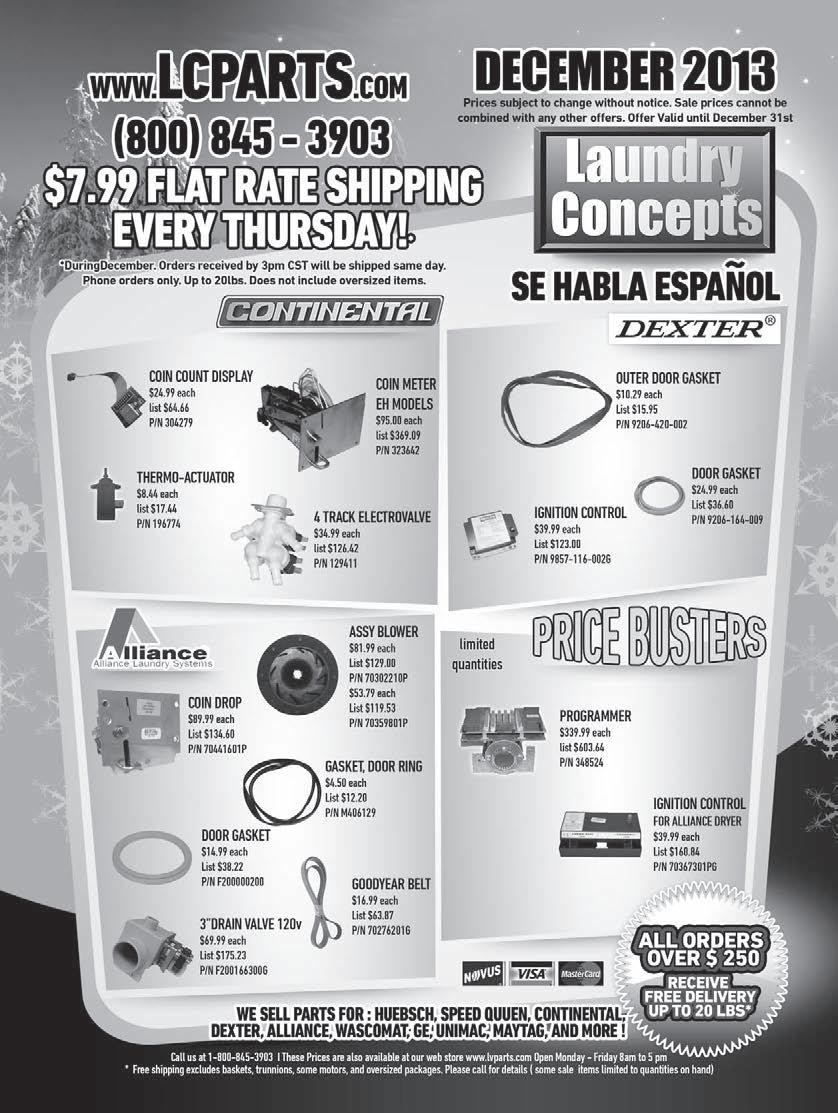
Wallace says. “These are just a few of the lessons through example that can guide and inspire laundry owners to achieve more.”
So, as a store owner, do you believe you have a responsibility to the industry as a whole, or is it every man and woman for themselves? Virtually every expert interviewed mentioned the need for association.

“A store owner’s primary responsibility is to operate a clean, attractive and profitable business for the benefit of their customers,” Gauthier says. “Simply doing that is a great contribution to our industry. Other efforts like association involvement are also important and should be strongly considered by all in our industry.”
“Obviously, it is that individual business owner’s capital at risk when a store is built or purchased. So, the primary responsibility remains with himself or herself. However, the overall health of the industry is impacted by each and every store,” Wallace says. “Not only through the level of service provided to the public, but also by the image projected to other key constituencies from legislators to landlords.
“Part of the power of associations like CLA is the ability to rally the industry toward improving business conditions for all. For the best laundry owners, what’s best for their business is completely aligned with what’s best for our industry.”
“Store owners should get involved with their local chapter associations so they can stay ahead of the curve,” Olsen says.

“Store owners must be willing to self-educate and become familiar with the industry,” Brick says. “By being part of related associations, partaking in trade shows and customer events, and providing useful feedback to both distributors and manufacturers.”
Fleck believes owners have a responsibility to get involved in laundry associations both locally and nationally to tackle industry challenges.
“In my experience, owners who participate in the industry are also the ones who take pride in bettering our industry by providing a superior experience to every end-user. These owners often evolve into successful multi-store owners down the road.”
For Kelly, it’s a responsibility to help change the image of the industry.
“Many people still view Laundromats as (if) they were 20, 30, or 40 years ago: old, dirty stores with beat-up and broken equipment,” he says. “These days, consumers demand more value-added amenities, and store owners go to great efforts to make their customers feel welcome and comfortable. It is important for all store owners to keep their store aesthetically pleasing and have reliable, efficient equipment to enhance the customer experience and continue improving the image of the industry.”
Regan urges store owners to continue to raise the bar for their laundry and the services it provides.

“As part of a community, a successful, attractive and safe laundry is a benefit to any community,” he says. “It also provides a positive outlook to someone else who is thinking about starting their own business,” which in turn will provide continued growth for manufacturers, distributors and service providers.
In the end, Wallace summed things up quite nicely: “Better operators with better stores, along with more efficient machines and new technology, spell an even brighter future for this industry.” n
(Nor woman either.) American Coin-op can now be viewed on tablets and other mobile devices – great ways to stay on top of the latest industry news and updates. www.americancoinop.com


The independent voice of the self-service laundry industry

































While the Laundromat industry is moving toward electronic payment systems, many operators continue to prefer dealing with coins. ESD has four basic models: a four-coin slide, a five-coin slide, an eight-coin slide and a 14-coin slide.
Each model can be configured to accept different numbers and denominations of coins, with a complete range from 5 cents to $3.50. ESD manufactures 72 different slides, one of which will accept the coinage of most countries in the world, plus makes slides specifically designed to accept tokens.
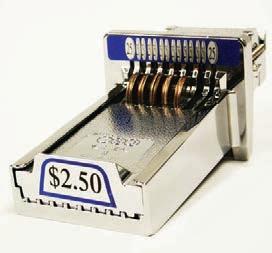
All ESD coin slides are equipped with security devices, and constructed of stainless steel, magnets and case-hardened parts.
ESD also manufactures a variety of money boxes with casehardened steel face plates and bolts, as well as a four-point locking system and a cone for extra protection for the lock. Four options of lock styles can be purchased with each of the boxes.
Coin trays are available in 6-, 8- and 9-inch lengths, and in the larger size required for newer machines. The faces are available in several finishes, including powder black, chrome and powder blue.
Setomatic Systems provides drop-coin meters for many makes and models of laundry machines designed for Laundromats.
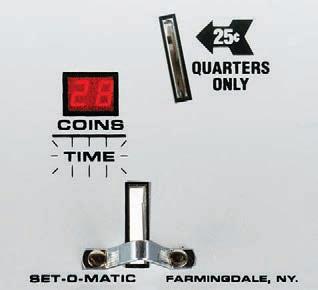
The company suggests replacing older turnknob dryer meters with an up-to-date drop-coin meter that features a digital display and time countdown. The meters are adjustable in 15-second increments and are easy to install, the company says.
If you still have plastic drop coins, Setomatic has all metal drop-coin replacements. The company also makes drop-coin meters to replace the coin slides on most machines.
Multi-push insertions on Wascomat washers can be eliminated with a drop-coin meter. The company also offers aftermarket drop-coin meters to replace factory-installed units on many front-load washers.
www.setomaticsystems.com 516-752-8008
www.esdcard.com 215-628-0860

Imonex products offer a payment option for all Laundromat applications, the company says. The ability to accept both dollars and quarters in a single-inlet coin acceptor is an option that benefits both store owners and customers.


Imonex manual, multicoin, single-inlet drops are dependable and profitable, says the company. With the addition of tokens, Imonex now offers token dispensers with the ability to accept credit/debit cards and currency, as well as a sorter to assist store owners with any task.
The MEI Group’s Cashflow® AE Series is comprised of bill validators designed for the unattended Laundromat industry. The validators accept and validate notes in a variety of conditions by use of optical technology.
The AE Series includes three base model types – AE2400, AE2600 and AE2800. Multiple operating voltages are available within each model type to meet varying machine requirements.

Because machine interfaces also vary, the series fea-
With these dispensers, Laundromats can operate without an attendant, Imonex says. The low-maintenance system is easy to use. Its ability to accept highervalue tokens helps extend the time between collections, and lessens the possibility of theft.
The tokens are utilized in all machines, and are recyclable. The tokens dispensed in the store are used in the store, and refunds in the form of tokens are used in the store.
www.imonex.com 800-446-2719
ture interfaces for Pulse, MDB, MEI Serial Protocol (EBDS) and NISR. Depending on the AE model selected, machines can accept denominations of $1 through $100. Cashflow bill validators also have the ability to accept coupons specifically designed to work only in a single store’s validators.
www.meigroup.com 800-345-8215
he coin sorters and counters from Klopp International are of metal construction, portable, and made in the United States.

The coin sorters, models SM and SE, will separate mixed coins and tokens into four different bins at a rate of 1,000 per minute, the company says. Customized sorters are available upon request. The manual model, weighing 19 pounds, features an optional rigid coin tray. The electric model weighs in at 33 pounds.
Klopp’s coin counters, models CM and CE, are cast aluminum and hardened steel, and will count, wrap and/or bag all U.S. coins as well as five sizes of tokens.
The counters process 1,800 coins per minute, which gives a store owner the potential of wrapping
$1,000 in quarters in 20 minutes. The tray holds approximately 3,000 coins, and also folds over for portability and storage.
The machines can be configured with three nylon-wrapping tubes for quarters, dimes and nickels, or with
a nylon-wrapping tube and an allpurpose bagging tube.
The manual machine weighs 14 pounds, while the electric model weighs 22 pounds.


www.kloppcoin.com 800-356-9080
Standard Change-Makers has released SC-MAX Conversion Kits. The kits allow operators to convert older System 500, 500-E and 600FST bill acceptors.
Since the discontinuation of System 600 series changers in 2012, the company has been working on the conversion kit design to allow in-place conversion of existing SC series cabinets with OEM bill acceptors manufactured by MEI (Mars) and Coinco.
The kits feature a SC-MAX Controller – a device that takes the place of the old Keypad (System 500) or handheld Data Terminal (System 600) – that includes a blue LCD display and four-button input, and which provides most of the programming, diag-
nostic and audit feedback provided by former devices. The SC-MAX Controller also provides all the hardware, cables and wiring connections
needed for the conversion, Standard Change-Makers says.
www.standardchange.com 800-968-6955
Money Machine 2, from Cummins-Allison, is a nextgeneration self-service coin counter for retail, financial, gaming and other businesses.
Owners may choose either a 70,000-coin-capacity bin to securely capture and store all processed coins, or a system of 16 highvolume bags able to hold 70,000 sorted coins.

In addition to delivering an affordable, high-quality machine, Cummins-Allison’s self-service coin programs offer a range of procurement choices for adding coin machines to lobbies or storefronts, the company says.
www.cumminsallison.com/ moneymachine 855-609-4802
Monarch Coin and Security supplies vertical eight- and 15-coin slides that can be set up to accept either U.S. or foreign coins, and they can be calibrated for any denomination. Token-operated 444 slides also are available. The company offers bill changer machines that supply the customer with either coins or tokens.
Monarch also supplies coin boxes to fit any commercial

laundry machine. These can be equipped with any of five different lock styles: Ace, Nova, Trigard, Duo or Medeco. Fronts are available in chrome, black or blue.
The company also has available coin box guards and full body armor that will enclose the entire meter case with 1/8-inch steel.
www.monarchcoin.com 800-462-9460

An industrial plant explodes in Texas.
A tornado ravages Oklahoma. A hurricane floods the East Coast. Bombs shut down the city of Boston.
Those recent disasters caused tremendous human suffering. All of them, too, brought devastation to businesses large and small. From damaged buildings to wrecked inventory to disrupted supply lines, natural and man-made disasters can tear a huge hole through profitability. In many cases, businesses close their doors for good.
Business owners must design and implement disaster recovery plans designed to mitigate harm when bad things happen. With that in mind, now would be a good time to revisit your own recovery plans with a fresh look.
Too often, the details of disaster planning get short-changed for pressing matters such as personnel or supplier issues. That’s a mistake. No matter how successful your operations, everything you do can come to a halt if there’s no Plan B when Plan A gets derailed.
“A bad event can take down a company forever,” says Jeffrey Williams, president of Binomial International, a disaster planning consultancy in Ogdensburg, N.Y. “That’s why it’s so dangerous for businesses to keep disaster planning on the back burner.”
In approaching a redesign of your own plan, experts counsel taking a broad view that incorporates “what-ifs.”

“There are three types of disasters,” says Williams. “The first is natural. Think weather. The second is technical, when equipment fails. The third is a human error, what people do to other people. That can be sabotage or a fire.”
Advice from Williams: plan for all three.
Suppose you were forced out of your building right now. Maybe you are the victim of a fire, flood or wind storm. How would you continue your business? The likeliest answer would be “with great difficulty,” unless you have taken measures to assure the maintenance of a certain level of customer service and sales.
“Businesses can take a number of steps to assist in getting through a crisis before the next disaster strikes,” says Chris Hackett, director of policy development in the research division of Property Casualty Insurers Association of America. Perhaps one of the most important, he says, is the determination of a temporary relocation site.
Whatever the location, it must be one where you can access your critical files. That includes your accounts receivable so you know who owes you money. It also
includes your customer lists to protect your future revenues. Keep a computer at this location with continually updated company data.
On the topic of alternatives, make sure you have a fallback Internet network into which you can plug your devices. And have a call-forwarding plan prepared that will route incoming calls.
Finally, put together an offsite list of emergency responders. These are people you’ll need to call to help solve the problems the disaster has caused. Include the following:
• Your attorney, accountant, and insurance agent.
• Any firms that can accomplish recovery tasks, such as removing water, cleaning, hauling trash, painting, repairing electrical/plumbing systems, replacing locks and getting computer equipment running.
• Real estate agencies that can help you set up a remote operational base while restorations continue.
The remote location is one thing: Having people who take the right actions is another. Identify the steps you’ll need to take when disaster strikes, then assign them to key personnel (if applicable).
“Things will go much smoother if everyone knows what they ought to do in a crisis,” says Williams.

Assign the following tasks to some key individuals: 1) Calling employees and customers to let them know what has happened; 2) Notifying suppliers and insurance companies; 3) Arranging for repair work by plumbers, electricians, and restoration contractors.

Have you sufficient property insurance in place? What may be good one year may no longer be adequate several years later. So, revisit your policies with a trusted adviser.
The No. 1 insurance category is, of course, property insurance that covers fire.
“As it relates to fire, policies should insure your structure for 100% of its replacement costs,” says Hackett. Replacement cost is the amount necessary to rebuild your
Insurance is great, but be prepared to prove your losses.
“It’s important to take inventory of the items in your business,” says Hackett. “Walk through your building with a camcorder and make a video. That will help expedite the settlement of your covered loss with the claims adjuster.”
A disaster can interrupt sales, and that means your expected revenue stream can dry up quickly. Think about buying protection.
“Business interruption insurance provides critical coverage for lost income— what your business would have earned but for the physical damage of a disaster,” says Hackett.
Standard property insurance policies generally cover water damage that results from pipes bursting. Not covered, however, is flooding from causes such as tidal surges or the overflow of rivers.
“Damage from flooding can be catastrophic,” says Michael Sapourn, a Floridabased attorney who has dealt extensively with flood damage insurance and litigation. “Those who own buildings located in areas vulnerable to such events should purchase flood insurance.”
Mortgage lenders will require you to buy flood insurance if you are located in a flood zone, as defined by the Federal Emergency Management Agency (FEMA).
structure using construction materials of like kind and quality.
If you are thinking of an addition or making renovations that will substantially increase the amount necessary to repair or replace your property, you should inform your agent. If you have not done so, the settlement under the policy will be based on the replacement cost information the carrier had on file at the time of the loss.
Consider, too, your deductibles.
“Lower deductibles mean less money out of your own pocket after a covered loss but cost more in premiums,” Hackett explains. “Higher deductibles mean lower premiums but more out-of-pocket costs when disaster strikes. You have to decide for yourself what you prefer. Ask yourself, if a loss happens tomorrow, would I be able to come up with the deductible or not?”
Purchasing interruption insurance requires thorough consultation with your agent.
You might also consider ‘extra expenses coverage,’ notes Hackett. “This insurance covers the higher expenses you might incur by moving to a new location, such as higher rents, and the costs of relocation.”
You can also get coverage for payroll expenses. “Just because your business is shut down, that doesn’t mean people will not expect a paycheck,” he says. “Paying them can be difficult if you are not taking in any income.”
Two more things: “Contingent business interruption insurance” covers lost income that results when a supplier can’t deliver. You can also purchase what’s called “extra contingency expenses insurance.” That covers the higher prices you might end up paying to an alternative supplier.
Finally, don’t make the common mistake of being underinsured. “Don’t try to save money by lowering limits. Get the coverage limits you need to protect you from a total loss.”
Flood insurance policies are typically not available on a replacement cost basis, so you will need to estimate what you need to rebuild.
Once you have your recovery plan and your insurance policies in place, you are in a much better position to survive should you be hit with a disaster.
“Disaster recovery planning is an evergreen issue that is never done,” says Williams. “People change jobs, functions change, mobile phone numbers change. Keep revisiting your plan.”
You don’t want to be caught without a lifeline when a crisis hits. n
Phillip M. Perry is a freelance writer based in New York City.

When considering new business ventures, savvy entrepreneurs look to the profitability of Laundromats and find that vended laundry stores in the United States see an average return on investment of 25-30%. But how does a store owner jump-start that success and then ensure it continues for years to come?
Prior to opening a store, there are several factors that a new investor should consider to better equip themselves for long-term success. This process starts with the initial building and furnishing of the store and transitions through to ongoing marketing efforts and, most importantly, customer service and appreciation.
The hardest part of owning a Laundromat is getting started, which is why choosing the correct partner is crucial. Working with a manufacturer that provides in-house financing, runs demographic analysis to choose an appropriate location, and offers smart advice regarding equipment mix and store design can help to remove the initial stress of store start-up. These early decisions also play an important role in the long-term success of the Laundromat.
Perhaps the most important thing to consider when making the initial investment is selecting reliable equipment. Start by investing in commercial-quality equipment that is known for its superior product design and is built by a manufacturer with extensive experience in commercial laundry. The equipment mix should be discussed and determined with the help of a knowledgeable distributor based on store size and customer demographics.
Investing in an industry-leading control system can help store owners. These systems allow an owner to adjust pricing by time of day and to identify equipment inefficiencies, helping to reduce utility costs, increase revenue and maximize profitability.
Many store owners choose to invest in Laundromats because the business does not demand constant on-site presence. Installing an advanced control system with wireless networking enhances this freedom. These control systems allow owners to program, monitor, audit and diagnose equipment from an Internet-connected
computer anywhere in the world. Additionally, the audit data may offer in-depth store and revenue reports to optimize financial performance, helping to ensure continued store profitability.
Investing in quality equipment and a state-of-theart control system are the first steps toward long-term laundry success; however, there are still many day-today actions that will help to attract new, and retain existing, customers.
While Laundromats offer store owners the freedom to manage their business remotely, it is important that investors have an ongoing commitment to excel at the fundamentals that keep customers coming back. The store should be cleaned daily, including in and around the outside entrance.
Daily machine maintenance, such as cleaning the lint filters on the dryers and the soap compartment on washers, helps to keep all machines functioning and ready for customer use. In the event of a machine breakdown, servicing should be done immediately.
In addition to providing a clean space, interior and exterior lighting must be maintained for the safety of all customers, especially if there are hours when the Laundromat will be left unattended. These are not difficult operational requirements, but owners who do not keep up with these daily tasks risk losing repeat customers.
It is suggested that Laundromat owners create monthly marketing plans aimed at existing and new customers. As a rule of thumb, most successful operators use 1% of monthly gross income for in-store marketing and 2-3% for external marketing to new customers.
Advertisements and promotions in local publications, signage, and maintaining an active social media presence are good ways to attract new customers. By providing proper signage within the store, Laundromats can increase customer awareness of additional services and new promotions. Additionally, rewarding customer loyalty also gives Laundromats the potential to grow their customer base through positive experiences.
Signage begins on the outside of the store with a professional-looking sign and a well-lit surrounding area. As customers move inside, they should see large
WASCO 185’s 220/1 & 220/3 $3,500
WASCO 184’s 220/1 & 220/3 $2,700
WASCO 125’s 220/1 & 220/3 $2,400
WASCO 124’s 220/1 & 220/3 $1,850
WASCO 74’s 110 v & 220/3 $ 975
WASCO 75’s 110 v & 220/3 $1,200
WASCO 620’s 110V $1,600
Our Parts Department has thousands of products on over an acre lot.
If we don’t have what you want, ask us, and we’ll find it for you.
From initial site inspections and recommendations to equipment purchase and installation, we are here to help with every aspect of your project.
We can help you with specifications, dimensions, illustrations of commercial and on-premise laundry equipment.


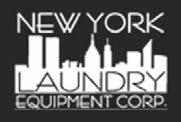
We are able to offer competitive rates and low, affordable monthly payments for financing coin laundry and laundromat facilities.
We have a coin laundry financing solution to meet the needs of new store owners, and veterans alike.

ACRES OF HARD TO FIND USED WASHER & DRYER PARTS WASHER & DRYER FRONT & SIDE PANELS ALL MAKES AND MODELS STARTING @ $50

WASHER DOOR $35 & UP COMPLETE DRYER DOOR $35 & UP COMPLETE ANY WASHER TUB 18#, 35#, 50#, WITH NEW BEARINGS $175 & UP WITH EXCHANGE ALL DRYER BASKETS $75 & UP ESD CARD READERS $150 EA

EMERALD SERIES COMPUTER BOARDS $575 EA
LET US REFURBISH YOUR PANELS ~ FRESHLY PAINTED PANELS IN EITHER ALMOND OR WHITE ... $70 EA
banners and window stickers that advertise weekly promotions, pricing charts and ancillary services.
Once a customer base is established, it is important to make returning customers feel welcome and important. Some stores find success with “Customer of the Month” programs, where customers fill out contact information on cards that are randomly drawn at the end of every month to receive a gift card. This contact information can also be useful for weekly or monthly promotional e-mails.
Giving free cycles is another way to show repeat customers that they are appreciated. Some control systems offer a “Lucky Cycle,” which gives a free or discounted wash on a machine after a predetermined number of cycles. These free perks provide the customer with something exciting, makes him or her feel special and creates buzz about the Laundromat.
It is easy to forget about the power of the existing customer; however, creating word-of-mouth marketing from current customers through these small tokens of appreciation is a huge opportunity. A 2013 study done by the Chicago advertising agency, Zócalo Group, found that “91% of consumers make a recommendation


Finally, to ensure that customers continue to return and promote the Laundromat, provide complimentary perks, such as TVs, a children’s area and free Wi-Fi. If the store is not located near a convenience store, consider providing snack machines for customers to use while waiting for their laundry to finish.
Ensuring long-term laundry success requires a continual investment of time and resources, but it is not complicated. The process begins with providing customers the best equipment, monitoring the Laundromat for machine errors and cleanliness, and “incentivizing” returning customers to recommend the store because of their positive experience. If each of these steps is executed properly, investors should continue to see increased profitability and a return on their investment. n
Dan Bowe is national sales manager of Speed Queen’s® commercial division. He oversees regional sales managers, develops policies and procedures, cultivates distributor partnerships and participates in the development of new products and services. To learn about Speed Queen, visit www.speedqueen.com or call 800-
Data shows that 35% of Laundromat operators own multiple stores. The remaining majority own single operations that provide the bulk of their income. Let me suggest that you make it a goal to own three or more stores. Here’s why.
Everyone needs a goal, and owning a chain of Laundromats is a worthy career achievement and a realizable challenge. A chain turns a ma-and-pa operation into a substantial business. With a threeor four-store chain, you might do a million dollars in volume. Most importantly, it makes you more of a manager and less of a worker. If you own one store and depend on it for your livelihood, more than
likely you are an active participant. You fix machines. You work as an attendant. You process the wash/dry/ fold and make deliveries. You carve out your own income, and that’s fine.
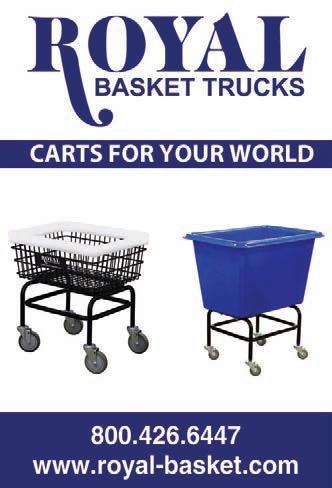
With a three-store business, you have to depend on employees, which makes you more of a businessperson and less of a staffer. You oversee the enterprise rather than run one store. You have to develop a larger vision. Profit, turns, costs, capital investment and ROI will become more than just terms. They will become the concepts that you employ to run your business.
Standard_half_horz 2/14/12 4:51 PM Page 1
You will have to become a savvy marketer and understand your customers and the different markets



in which you operate. Since you are no longer a worker, you’ll be freer in many ways. That is, you don’t have to be there to cover a shift every day. Sure, you fill in when someone’s sick, but that’s not the same thing. As soon as you learn to handle the stress and the people management aspect of the business, a manager’s job is easier in many ways. However, your mind will be taxed more. Such a shift bodes well for a long career in the industry.
Other benefits come from owning a three-store chain. You are able to buy supplies at bottom-line pricing. Each box of soap will earn you 50 cents each rather than 40. Depending on your area, your utility rates might even be bulk-rated and cost you less on a poundage basis. Because you give the mechanic who fixes your machines so much business, you receive a lower per-job rate. If you decide to upgrade, three stores are cheaper than one since you can negotiate for a better price for 12 machines than for three.
You can save on operating costs. The truck that delivers for one store will cost more than the one truck that delivers for three stores, simply because the driver can economize on routes, and vehicle costs can be apportioned out over more deliveries.
Bulk advertising rates can be found. If you do Valpak marketing, the more mailings you send out, the cheaper the per-unit offering will be. If you operate in one market, ad rates can be ganged
Photo: ©iStockphoto/oztasbc
for better pricing. If you offer dry cleaning, you can bargain down your wholesale price from 60% to 50%. Vending machine suppliers will be more cooperative, because three times the machines will be utilized.
Then there is flexibility. Washers and dryers can be moved around to respond to changing requirements. Staff can be switched to better handle traffic or to cover for absent staffers. Even customers could be better serviced. If a customer wants to do extremely large loads, then you could send them to the store with the largest load capacity. If one store has a fire, a flood or is out of commission for a while, you’re not out of business. You can simply reroute your business to the other two stores. Or even better, you can collect the work, take it to the other stores, do the work, and return it as wash/dry/fold work.
If you don’t currently have attended stores, perhaps creating a chain will prompt you to man your stores. Certainly, you can hire a staffer and get him/her to do the wash/dry/fold business. Plus, now you can offer other services, such as dry cleaning and shoe repair on an outsource basis. The additional volume should, in time, cover the staffer’s salary. At that point, you are ahead of the game. You have an on-premises staffer to help customers, fix machines, and add a layer of safety. All these aspects can’t help but add to your operation. And the cost of this multi-benefit package is more or less covered by the additional trade.
Best of all, you’ll become a more astute practitioner. One store will teach you things you can apply to the others. You can compare figures and examine why one store has lower costs, then use that knowledge to help the other stores. You will really understand bottom-line managing. Your take-home pay will no longer be a function of your contribution. Now, it will be a function of your managerial skill, which, in turn, is based on bottom-line profit.
My point is not to nag. You’re doing a great job running your shop. You’re paying the bills and making a living. Good for you. Why not stretch yourself and open up a second shop? After you get that going, open a third. Who knows, maybe you’ll want a fourth outlet? Because, then, you’ll be not just a “Laundromateur,” you’ll be an entrepreneur.
Who knows, such success might prod you to get into other ventures. I know someone who owned a store. After four years of running his place, he started to expand. In a short while, he owned five stores. Then he set about to buy the property at each location. When he retired, he owned seven stores and four properties and was a wealthy man. To this day, he attributes his success to opening a second store. That was his biggest hurdle, but once he made the jump, it was easy to continue to expand.
This could be you. n
Howard Scott is a long-time business writer, small-business consultant, and author of four books.
one store will teach you things you can apply to the others.


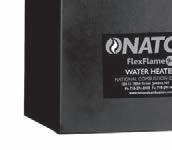





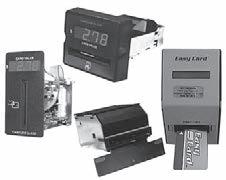

large laundry mat located in Woodward, OK Housed in a 5000 sq ft Commercial Building The current owners have two growing businesses and feel it’s time to concentrate on just one The Laundromat is a growing business both physically and financially The current owners have excellent financial records The clientele consists of individuals and commercial clients in the hotel industry An approximate list of equipment includes: 12 Speed Queen Top Load Washers; 8 Speed Queen Horizon Double Front Load Washers (new 2007); 17 Speed Queen Commercial Dryers 30#; 2 Speed Queen Commercial Dryers 75#; 3 Speed Queen Front Load Washers 30#; 2 Speed Queen Front Load Washers 40#; 1 Speed Queen Front Load Washer 60#; 1 Forenta Dry Press; 1 Commercial Water Softener w/holding tank; 1 KLOPP coin counter; 1 Commercial scale; 1 Dell Computer System (new 2012) POS Profitmaker Software w/3 printers; 1 Commercial hot water tank w/recirculation pump; 3 CH/A units; 1 Security System 6 camera (new 2011) w/office color monitor (new 2012); Central Vac System for E/2 of building; 2005 Chrysler Van w/stowaway storage In the last year the owners acquired the adjoining car wash, adding to this property’s income production Call Ira Smith for more information at 580-254-3975 or 580-334-6001

AlliAnce lAundry Moves ForwArd with $46 Million expAnsion Alliance Laundry Systems is moving forward with a $46 million expansion project, only a few months after completing a production capacity increase, the company reports.
The largest expansion in the company’s history, the project plans call for adding 106,000 square feet of space for manufacturing and assembly, says Alliance. The company anticipates breaking ground for the expansion in February, and expects the added production capacity to be online in the second half of 2015.
At present, its corporate campus in Ripon occupies five buildings on more than 58 acres, including two manufacturing plants, an engineering center and test lab, and distribution facilities, for a total of more than 1 million square feet.
Alliance plans to immediately hire an additional 150 manufacturing and office staff to support the added capacity, the company says, while the majority of production employees will be hired in 2015.
The project received final internal approval after Alliance had secured agreements with its union, the United Steelworkers Local 1327, the City of Ripon and Fond du Lac County.
“Alliance makes the most reliable and durable laundry equipment available, and demand for our products keeps growing, both in the U.S. and overseas,” says Mike Schoeb, Alliance Laundry president and CEO. “Our core philosophy is to delight our customers with each and every interaction, provide the best products in the industry and excel in our service levels. The dedication of our people is what puts this philosophy into action. The proof the formula works shows in our steadily growing revenues.”
The Coin Laundry Association (CLA) and its state affiliates are reporting success in six of its campaigns that protect sales tax exemptions for the self-service laundry industry, effectively saving Laundromat owners at least $20 million in 2013, the association reports.
The CLA says that the states of Minnesota, Ohio, Louisiana, Maine and North Carolina all pushed tax reform plans that would have eliminated the sales tax exemptions for laundries, and could have cost Laundromat owners $10,000 to $15,000 a year per store.
The Wisconsin Self-Service Laundry Association was successful in extending the current exemption beyond “coin-operated” to include card-based transactions, the CLA adds, which paves the way for owners to adopt alternative-payment system technologies.
“A core group of amazing volunteers stepped up to respond to the threat and ensure that all laundries were protected,” says CLA President and CEO Brian Wallace. “They made phone calls, testified at committee hearings, kept their local members informed, spent their own dollars to travel and supported lobbying efforts.”
The CLA adds that lobbyists representing the association worked closely with state House and Senate legislators, as well as
committee staffers, to explain the unfairness of imposing a sales tax on coin-operated laundries.
In North Carolina, the General Assembly undertook a serious effort to reform its tax code. The Senate Finance Committee chairman’s proposal to rewrite the code would have significantly broadened the sales tax base, including removing the current exemption for coin-operated laundries, says North Carolina lobbyist Charles B. Neely Jr. of Williams Mullen.
The House passed its reform legislation without revoking the current tax exemption, and while the Senate made significant changes to the House legislation, it, too, decided not to revoke the tax exemption.
“The calls made by CLA members to key senators were important in preserving the sales tax exemption,” Neely says.
nc lAundroMAt Brightens store through led retroFit Willow Creek Laundromat is now providing a “brighter” laundry environment to patrons by recently retrofitting the store’s lighting system with LED lights, reports North Carolina-based Carolina LED, which provided the retrofitting services.
Situated in the Willow Creek Shopping Center in Carrboro, N.C., the Laundromat now uses 30 2-tube T8 LED systems to light its 2,500-square-foot space, according to Carolina LED. It was the laundry’s goal to provide a clean, bright environment for out-of-town visitors, local residents, and for those who want the convenience of large-capacity washers and dryers.
Carolina LED reports that it provided Willow Creek Laundromat with all the forms and guidance for pre-approval of limited-time cash rebates from Duke Energy’s “Smart $aver Incentives” program and federal tax incentives.
“Carolina LED’s tagline is ‘Achieving lower costs and a brighter environment™,’” the company adds. “To these Laundromat owners, the ‘brighter environment’ is a business value added, because they’ve noticed that patrons tend to revisit more often when it appears brighter in [the store].”
energy stAr rAtings extended to lArger electrolux wAshers Electrolux Professional Laundry’s ENERGY STAR® ratings have been extended to include its washers up to 45 pounds in capacity, the company reports.
“We are very proud that now an even larger range of our laundry equipment solutions is part of the ENERGY STAR program,” says Esther Staskiewicz, head of marketing at Electrolux Professional (Business Unit Laundry Systems).
Established in 1992, ENERGY STAR is a joint program between the U.S. Environmental Protection Agency and the U.S. Department of Energy, whose mission is to provide customers with guidelines on energy-efficient products and practices.
Electrolux Professional adds that its H-series line provides coin laundries with “real savings and improvements” through “time savings, enhanced economics and flexibility.”
To be a truly efficient washer you have to do more than just use less water. Our 100G Standard Spin, 200G Rapid Spin and 350G High Spin washers provide truly efficient wash cycles while also reducing dry times by as much as 15% with our high speed extract. Saving water on the wash cycle and time on the dry cycle will allow your laundry to operate as efficiently as possible, increasing turns and lowering utilities to improve revenue. Choose what speed works for you!
For more information visit: www.adclaundry.com or contact us directly at sales@amdry.com

Why did you choose an ESD system?

We obviously wanted a state-of-the-art card system that would give us a competitive advantage, but we also wanted a company that was as celebrated for their service and customer care as they are for their most successful products. ESD is the gold standard in the industry because of superior products, well-trained personnel, and outstanding customer service.
Brian Holland, PartnerIn the purest sense of the word, we are “newbies” to the vended laundry arena - excited to be here, eager to play, hungry for knowledge, and humble enough to learn from anyone who is willing to offer guidance. At the same time we have seasoned experience and battle scars from both corporate- and small business experiences in unrelated industries. While the industries are completely unrelated, the foundational business principals that they taught - Customer Service, Finance, Marketing, Sales, People Management, HR, Operations - are all directly relevant. Maybe we’re newbies with a little seasoning.
The Laundry Café is located in a fantastic destination location, but it is in a an internet challenged area of the city. ESD exceeded all our expectations by creating a wireless network even though none of the major internet providers were available. ESD has an internal team of IT professionals who customized our system to meet our needs, from design to installation.
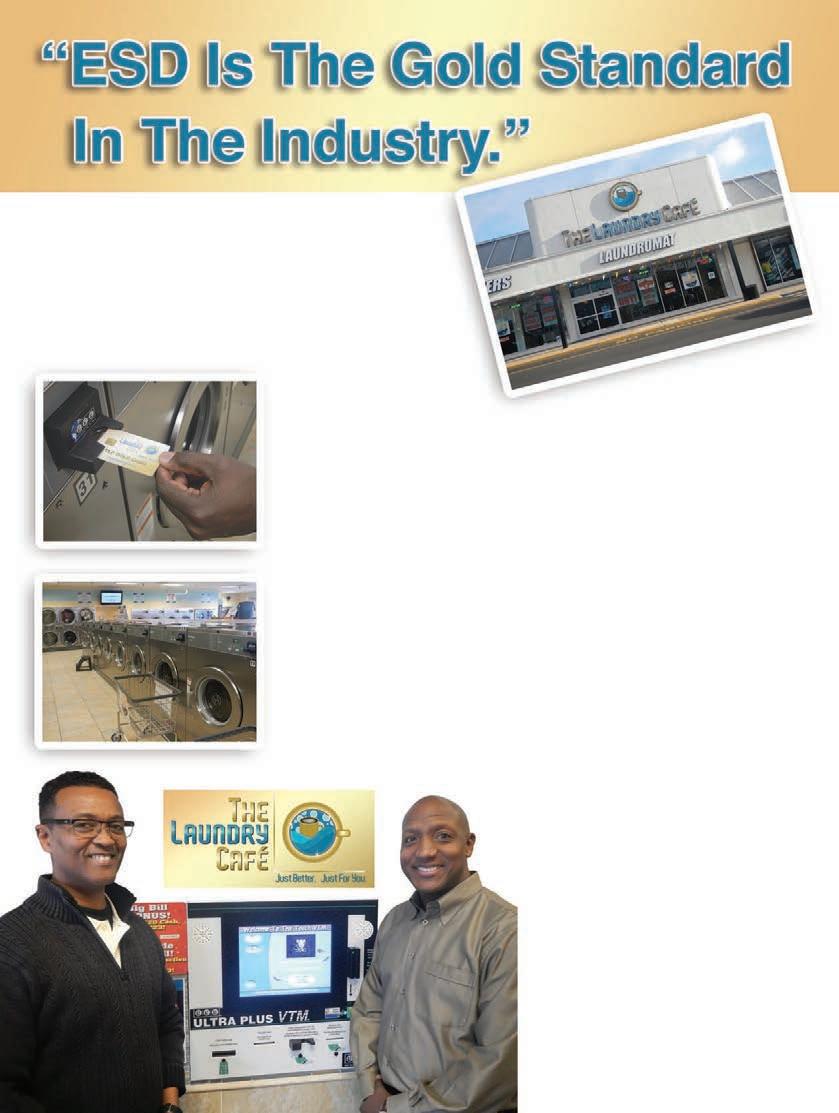
I was pleasantly surprised at the managerial utilities. The reports are thorough, comprehensive,and seamlessly integrated. I can produce performance reports that track nearly everything. These are great for tracking your business and making informed adjustments for improvement.
Contact your local ESD distributor or ESD sales representative for more information.
What is your experience in the laundry industry?Brian Holland & Tyrone Akins of The Laundry Café
What are the unknown challenges that you faced with your new store? How has ESD’s system helped you to overcome these challenges?